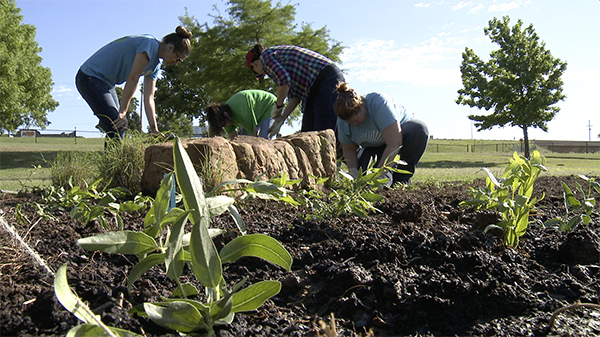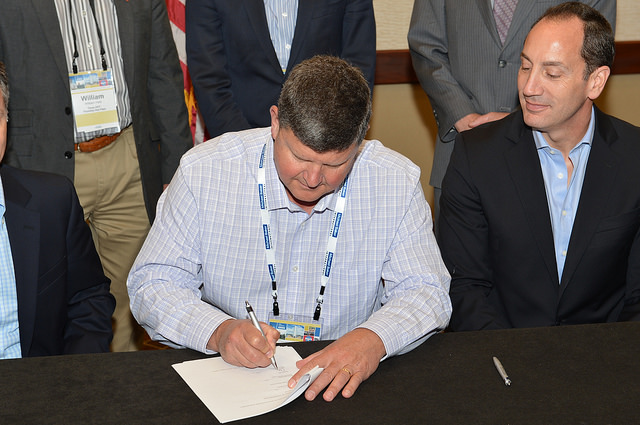The Oklahoma Department of Transportation is inviting Monarch butterflies and other pollinators to join travelers at the Oklahoma City Welcome Center to stretch their wings, grab a cup of nectar and check out the new garden on their way up the newly established national Monarch Highway.
The department planted the pollinator garden and updated its mowing practices in anticipation of the memorandum of agreement that was signed in partnership with six other states. This collaboration with the Federal Highway Administration and the Missouri, Texas, Iowa, Kansas and Minnesota DOTs designates Interstate 35 as the Monarch Highway.
“We are excited to be a part of this important effort to preserve habitats for pollinators that are vital to our food sources,” Brad Mirth, ODOT state maintenance engineer, said. “Our goal is to protect more of their natural habitat by allowing milkweed and native flowers to grow in the right-of-way where possible and use the garden as an educational tool to help the public recognize and protect this important vegetation.”
Beginning this spring ODOT will refrain from mowing the highway rights-of-way statewide, except where necessary, until July when the flowers will be primed for seed dispersal. The department will still mow in urban areas and safety zones, which includes medians and rights-of-way up to 30 feet from the pavement’s edge. In addition to protecting milkweed and wildflowers that butterflies need, the department expects this to be a cost saving practice.
The garden, a registered Monarch Waystation, is a 20 foot by 40 foot plot containing five types of milkweed, Black-eyed Susans, purple coneflower and other types of wildflowers as well as native grasses little bluestem and switchgrass. Visitors can view the garden at the Oklahoma City Welcome Center on I-35 and 122nd St. in Oklahoma City.
Monarch butterflies born in late summer or early fall migrate south to winter in Mexico. In the spring, the butterflies return to the southern U.S. and lay eggs. Successive generations of Monarchs continue moving north, which takes them along the I-35 corridor and finally into Canada. These Monarchs begin the cycle over again by completing a 2,000-mile trek back to Mexico.

ODOT employees plant milkweed at the Monarch Waystation garden at the Oklahoma City Welcome Center on I-35 and 122nd St. in Oklahoma City. ODOT hopes this new garden will serve an an educational tool for the public to recognize and protect natural Monarch butterfly habitat.

ODOT chief engineer Casey Shell, along with six other state leaders, signs the memorandum of understanding unofficially naming I-35 the Monarch Highway.


